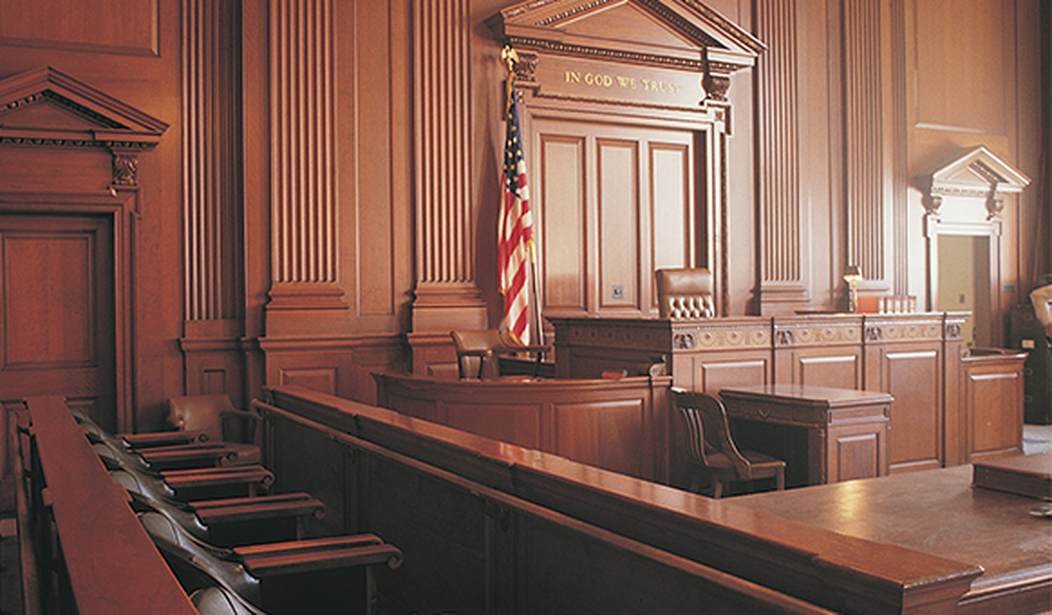According to multiple news reports, the “person of interest” (police have not formally described him as a suspect as of the time of publication) that authorities are desperately searching for in connection with the mass murder committed in Lewiston, Maine on Wednesday night spent at least two weeks in a mental hospital in the state earlier this year.
A bulletin put out by the Maine Information and Analysis Center, a database for law enforcement officials, said Card was a trained firearms instructor and was believed to be in the Army Reserve. [Editor’s note: updated information from the Maine Information and Analysis Center now reports that the person of interest is not a firearms instructor.]
It added that law enforcement said Card “recently reported mental health issues to include hearing voices and threats to shoot up the National Guard Base in Saco, ME.”
The bulletin said Card was reported to have been committed to a mental health facility for two weeks this summer and then released. NBC News has not been able to independently verify the bulletin’s statements about Card’s history.
If the person of interest was involuntarily committed to a mental health facility, that would have precluded him from legally purchasing or possessing a firearm. A voluntary commitment, on the other hand, wouldn’t necessarily have resulted in a NICS denial after he was released.
We don’t yet know the circumstances of his commitment, nor do we know if his inpatient treatment at the mental health facility triggered Maine’s “yellow flag” law that was put into effect in 2019.
The statute in Maine is similar to “red flag” laws found in 21 states, though there are some key differences. Under the vast majority of “red flag” laws, a judge is the sole person responsible for determining if someone poses a danger to themselves or others. The “yellow flag” law in Maine, however, requires a medical practitioner to examine the person in question as one of the first steps in the process.
A medical practitioner shall notify in writing the law enforcement officer or law enforcement agency that, based on the assessment under subsection 2, paragraph B, the person is found to present a likelihood of foreseeable harm.
If so notified, the law enforcement officer or law enforcement agency shall as soon as practicable seek endorsement by a Superior Court Justice, District Court Judge, judge of probate or justice of the peace of the medical practitioner’s assessment and law enforcement’s declarations that the person was taken into protective custody and that the law enforcement officer has probable cause that the person possesses, controls or may acquire a dangerous weapon.
The judge or justice shall promptly transmit to the law enforcement officer or agency the decision to endorse or not endorse. A decision transmitted electronically has the same legal effect and validity as a signed original. An endorsement must authorize law enforcement to execute the authority in subsection 4. This section may not be construed to prevent law enforcement from accepting a voluntary surrender of dangerous weapons.
If a judge endorses the determination that the individual does pose a threat to themselves or others, that individual immediately becomes a prohibited person and is supposed to turn over any and all firearms in their possession to police pending the outcome of a judicial hearing, which is supposed to take place within two weeks. If the subject does not turn over their guns, police can apply for a warrant to search the home and seize any guns that are found.
During the judicial hearing, a judge “shall consider all relevant evidence”, which the state legislature defines as:
including, but not limited to, recent threats or acts of violence by the restricted person directed toward other persons; recent threats or acts of violence by the restricted person directed toward the restricted person; recent acts of unlawful abuse of animals by the restricted person; the reckless use or threatening display of a dangerous weapon by the restricted person; a history of the use, attempted use or threatened use of physical force by the restricted person against other persons; a record of prior custodial events or restrictions under this section; prior involuntary confinement of the restricted person in a hospital for persons with psychiatric disabilities; prior protection from abuse and protection from harassment orders against the restricted person or violations regarding protection from abuse or protection from harassment by the restricted person; evidence of stalking behavior, severe obsession or sexual violence by the restricted person; the illegal use of controlled substances by the restricted person; and evidence of alcohol or drug abuse by the restricted person. The court shall also consider whether the restricted person is receiving treatment responsive to that person’s mental health or substance use needs.
If, after the hearing, the judge determines that there is not “clear and convincing evidence” of the person’s dangerousness, the “yellow flag” order is supposed to be immediately suspended and the individual’s firearms returned to them. If a judge does find that clear and convincing evidence, then “the court shall inform the restricted person that the restricted person is prohibited for up to one year from purchasing, possessing or controlling any dangerous weapon or attempting to purchase, possess or control any dangerous weapon.”
If the person of interest in the Lewiston shootings actually did self-report mental health issues including a threat to shoot up an army base and was committed to a mental health facility, that likely would have been seen as “clear and convincing evidence” that he presented a danger to himself or others. Whether or not that step was taken is unknown at the moment, but that will be an important part of the investigation going forward, as well as the renewed calls for gun control that are sure to come from legislators.









Join the conversation as a VIP Member